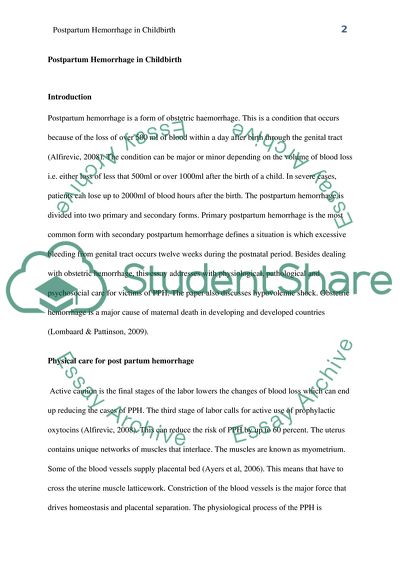Cite this document
(Primary Postpartum Hemorrhage Term Paper Example | Topics and Well Written Essays - 2608 words, n.d.)
Primary Postpartum Hemorrhage Term Paper Example | Topics and Well Written Essays - 2608 words. Retrieved from https://studentshare.org/health-sciences-medicine/1801901-postpartum-haemorrhage-in-childbirth-and-underlying-pathophysiology-and-psychosocial-it-presents
Primary Postpartum Hemorrhage Term Paper Example | Topics and Well Written Essays - 2608 words. Retrieved from https://studentshare.org/health-sciences-medicine/1801901-postpartum-haemorrhage-in-childbirth-and-underlying-pathophysiology-and-psychosocial-it-presents
(Primary Postpartum Hemorrhage Term Paper Example | Topics and Well Written Essays - 2608 Words)
Primary Postpartum Hemorrhage Term Paper Example | Topics and Well Written Essays - 2608 Words. https://studentshare.org/health-sciences-medicine/1801901-postpartum-haemorrhage-in-childbirth-and-underlying-pathophysiology-and-psychosocial-it-presents.
Primary Postpartum Hemorrhage Term Paper Example | Topics and Well Written Essays - 2608 Words. https://studentshare.org/health-sciences-medicine/1801901-postpartum-haemorrhage-in-childbirth-and-underlying-pathophysiology-and-psychosocial-it-presents.
“Primary Postpartum Hemorrhage Term Paper Example | Topics and Well Written Essays - 2608 Words”, n.d. https://studentshare.org/health-sciences-medicine/1801901-postpartum-haemorrhage-in-childbirth-and-underlying-pathophysiology-and-psychosocial-it-presents.


